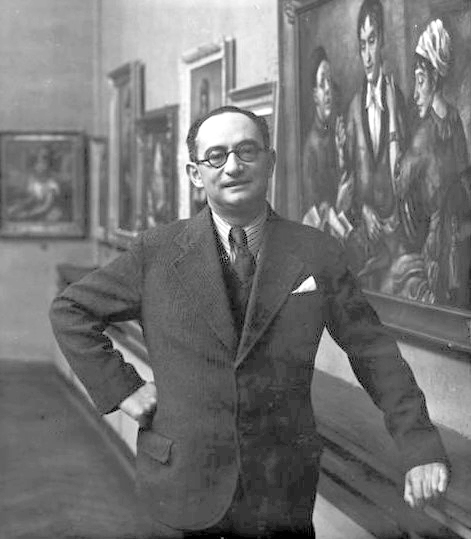Before the outbreak of World War II, a small group of Jewish painters left for the USA or Western Europe in fear of an attack by Germans on Poland. However, the majority did not decide to take this step and remained in the country occupied by the Germans. Until the end of their days, many of them continued their artistic activities. Others, at the request of the Germans, were forced to perform various artistic works in order to save their lives or increase their chances of survival.
The most famous case of using the talents of Jewish artists is the wall decorations which Bruno Schulz made in a villa belonging to Feliks Landau, the supervisor of the ghetto in Drohobych, that have survived to this day. In the Łódź ghetto, the Jews had to set up a special studio to produce graphics commissioned by the local SS. A similar studio operated in Białystok, where talented Jews were ordered to forge known paintings, which the Germans then sold on the antiquarian markets of neutral countries.
Artists, as well as representatives of other intelligentsia professions, were locked in ghettos and deprived of the possibility of earning money and had a very difficult material situation. Few institutions helped them, including Judenrat in Warsaw, purchasing works of selected artists. Others received individual orders. For example, Symche Trachter, Feliks Frydman and Maksymilian Eljowicz decorated the representative hall of the seat of the Jewish council at Grzybowska Street, and others worked with stained glass. The head of the Warsaw Judenrat, Adam Czerniaków himself, tried to alleviate the tragedy of the painters by buying paintings from them. He ordered his portrait from Roman Kramsztyk.
The artists also tried to develop industry self-help organizations. There was a kitchen for intelligentsia in the Warsaw ghetto, as well as in the Łódź ghetto. It was founded in Warsaw by visual artists. However, most had to retrain. Sometimes a new job gave unexpectedly good wages. Income was generated, for example, by the whetstone factory, which was located in the Warsaw ghetto at Mylna Street, founded in their atelier by Władysław Weintraub and Abraham Ostarz.
Most of the artists did not survive the Holocaust, but sometimes they left behind their works handed over to Poles, which were a moving record of the horror of the Holocaust. The everyday life of the ghettos was portrayed by Roman Kramsztyk in Warsaw, and by Izrael Lejzerowicz and Natan Szpigel in Łódź.





